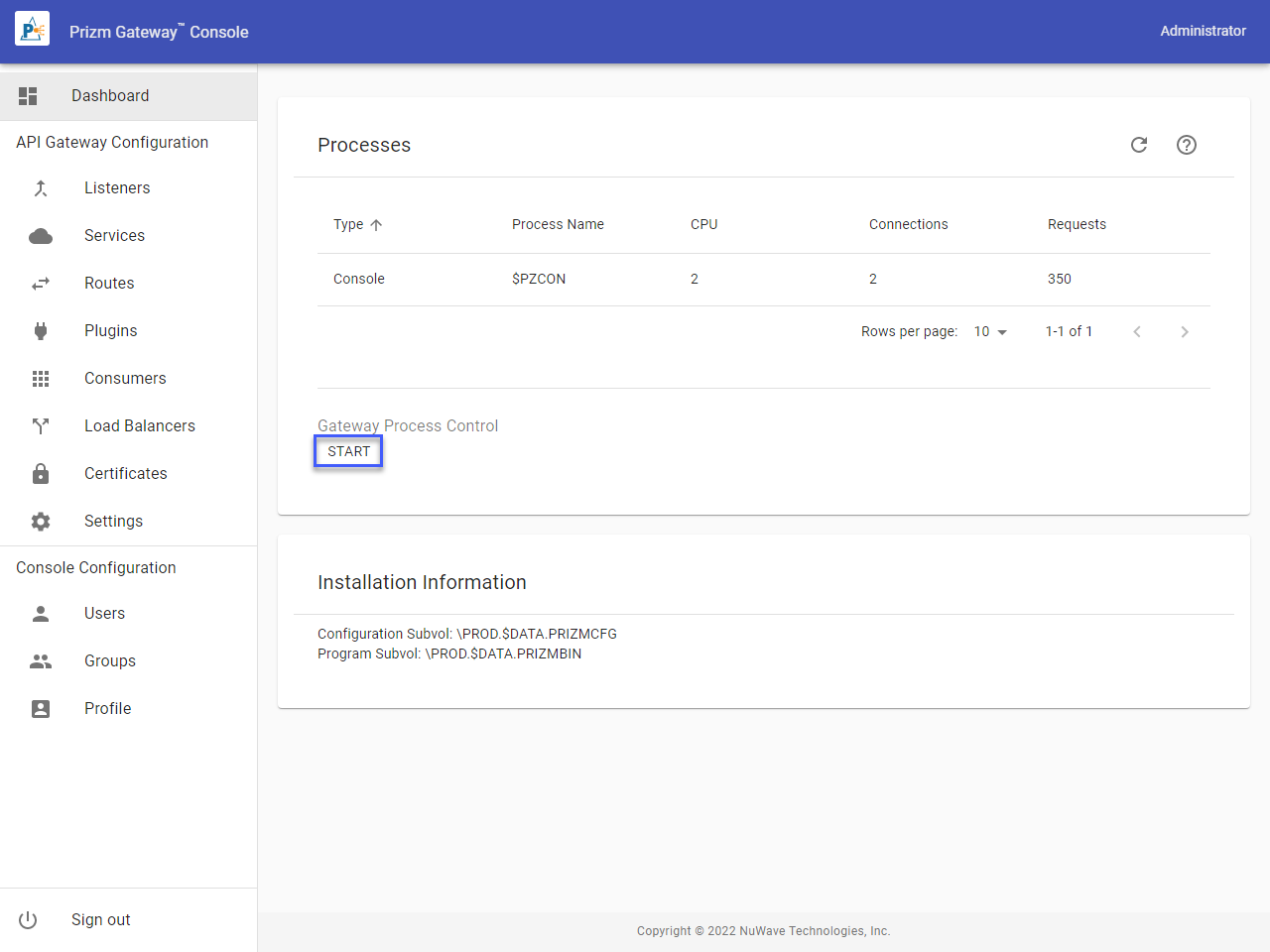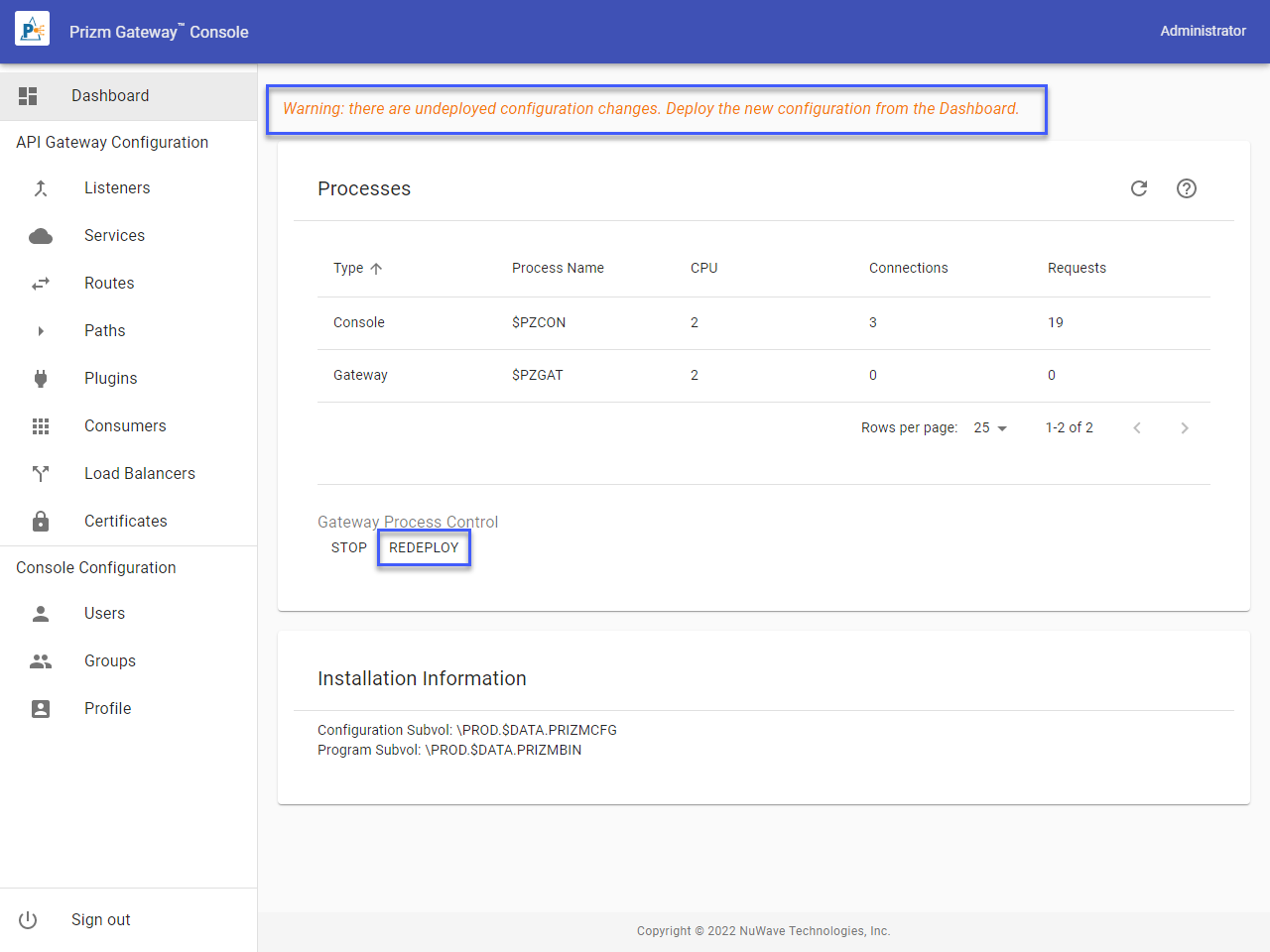Configuration Basics
In order to deploy a working gateway, at minimum, a Listener, Server, and Route must be configured. Listeners define which TCP/IP ports the gateway will listen on, and defines the properties of those ports such as whether the port supports TLS and HTTP2, etc. HTTP requests enter the gateway through Listeners. Services define upstream web services service providers. HTTP requests exit the gateway to through Services, either directly, or through a logical Load Balancer. Routes bind Listeners to Services by examining each request entering a Listener and routing it to a Service based on the URI of the request. In order for a request to be routed through the gateway, the full or partial URI of the request must be specified as a path configured within a Route.
Gateway configuration is managed through the Console. Note that any configuration changes that are made are not immediately "live" in the Gateway. Once all configuration changes have been made, the new configuration is deployed into the Gateway by starting the Gateway processes or deploying the new configuration to the already running gateway processes. Starting, stopping, and redeploying the gateway processes is managed from the Console Dashboard.
When no gateway processes are running, they may be started with the current configuration by clicking the Start button in the Processes section of the Dashboard.

When gateway processes are already running, the latest configuration is redeployed by clicking the Redeploy button in the Processes section of the Dashboard. Note that when configuration changes are pending deployment, a message is displayed in the footer of all pages.

